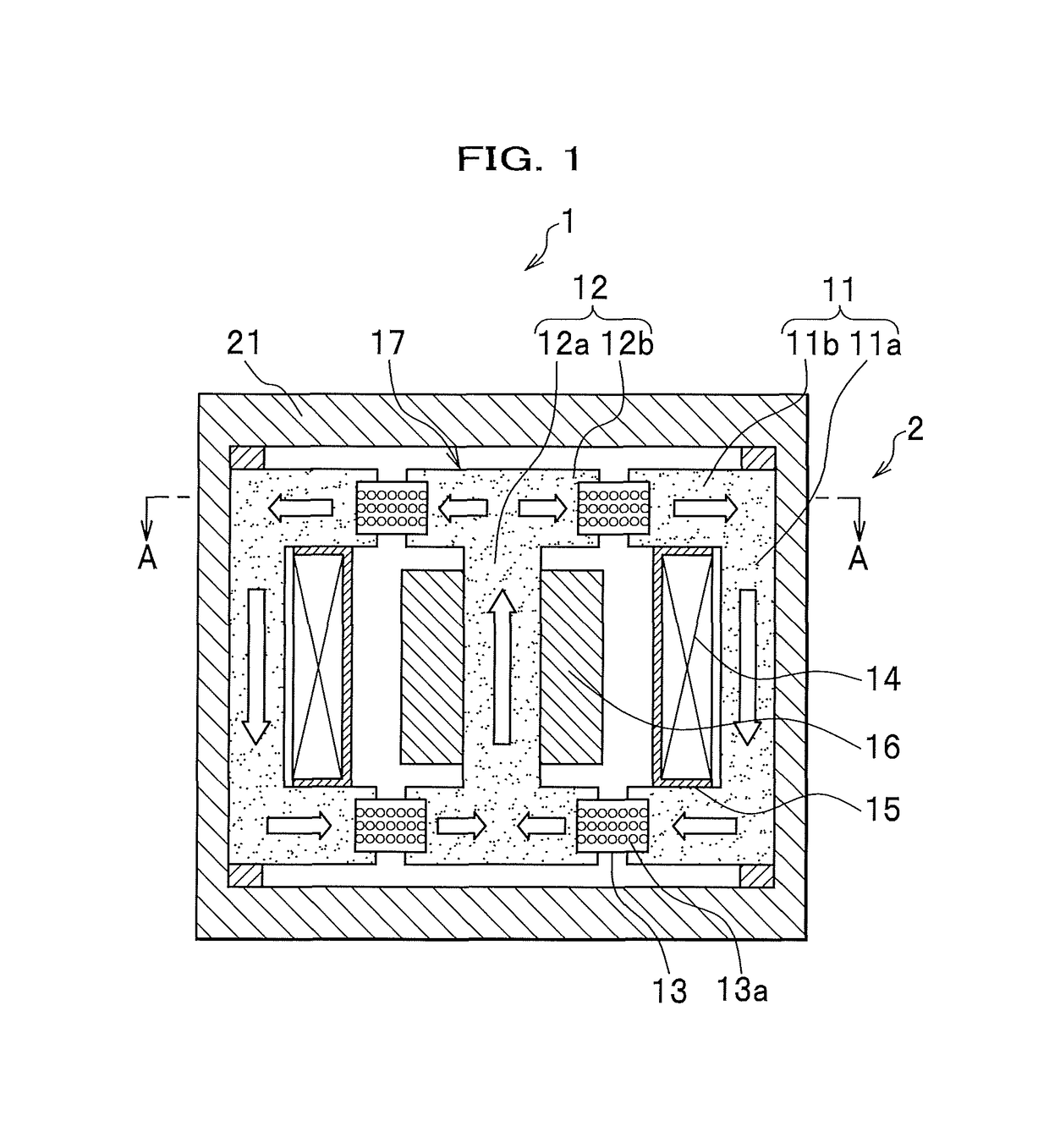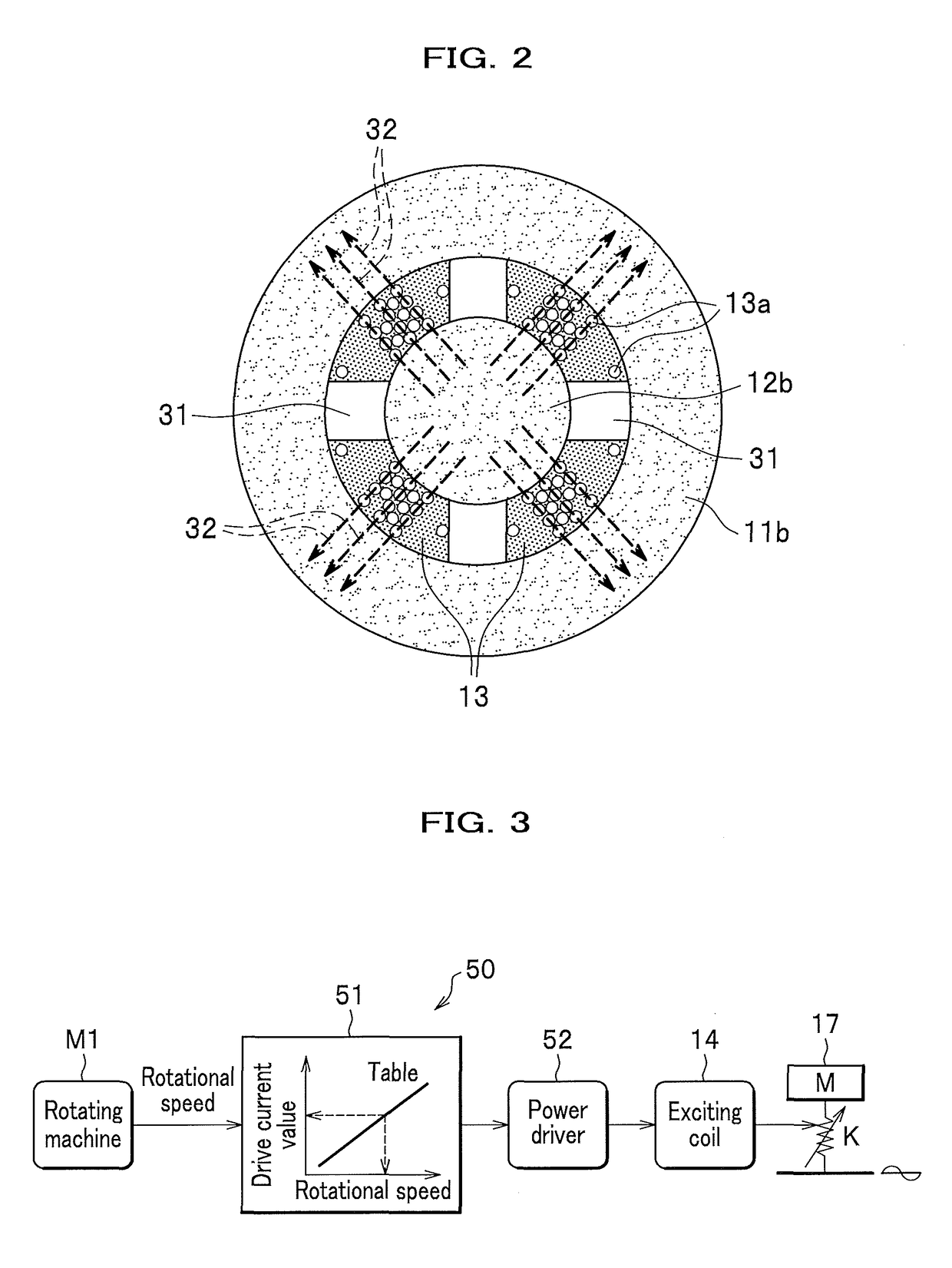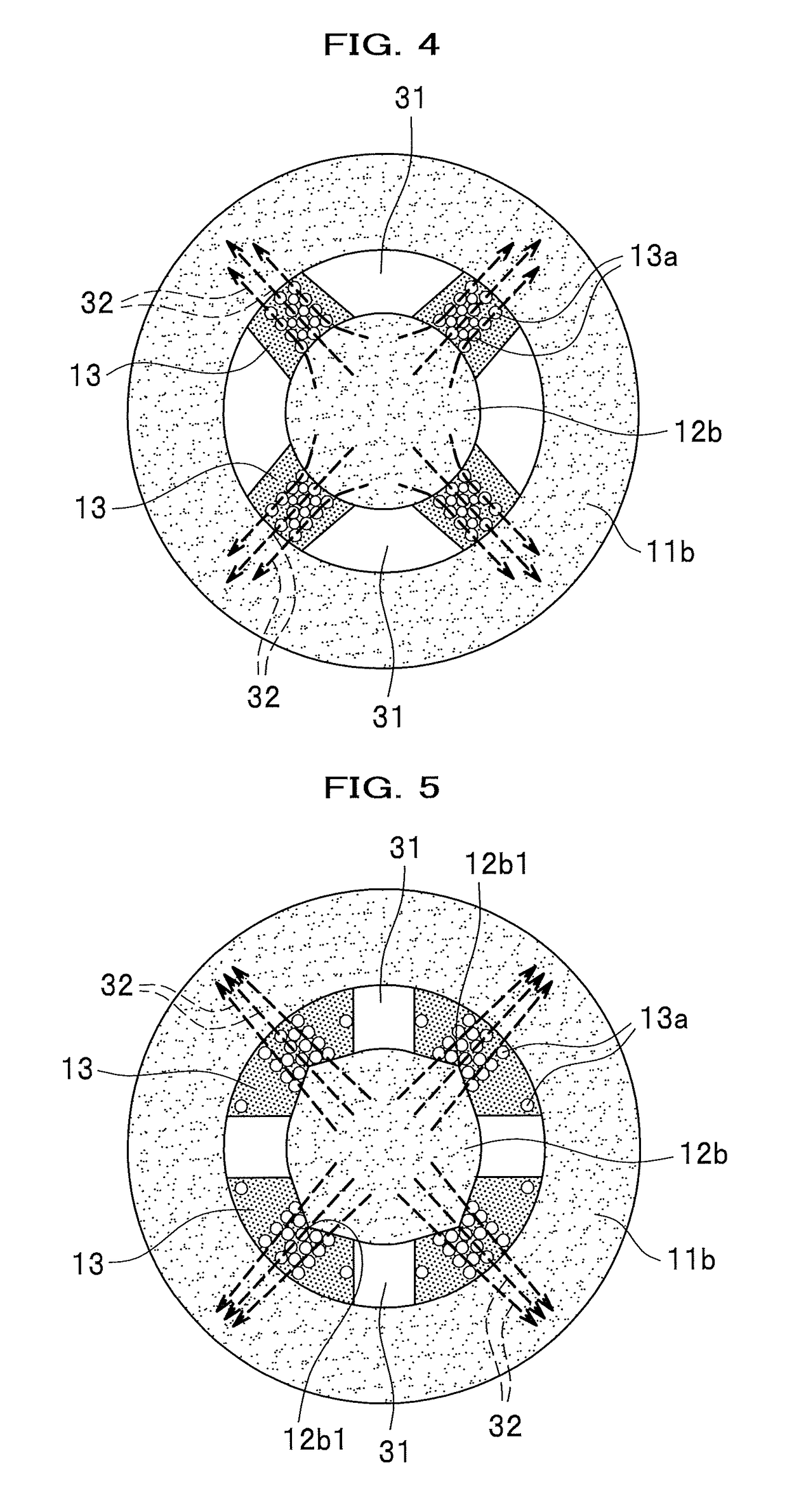Active vibration controller
a technology of active vibration and controller, which is applied in the direction of magnetic springs, low internal friction springs, mechanical apparatus, etc., can solve the problems of insufficient damping effect, inability to fully give the damping effect of the dynamic absorber, and the difficulty of directly applying outer energy, so as to improve increase the variation in the stiffness of the magnetic viscoelastic elastomer, and reduce the limit of the bas
- Summary
- Abstract
- Description
- Claims
- Application Information
AI Technical Summary
Benefits of technology
Problems solved by technology
Method used
Image
Examples
first embodiment
[0036]A first embodiment of the present invention is described below in detail, referring to the attached drawing.
[0037]FIG. 1 is an elevational sectional view of the active vibration controller according to the first embodiment of the present invention.
[0038]An active vibration controller 1 includes a housing 21 having a non-magnetic hollow circular cylinder. The housing 21 houses therein a movable part 17 which can move in response to vibrations from the outside and a first magnetic core 11. The movable part 17 includes a second magnetic core 12 and an adjusting mass 16. Further, the housing 21 houses an exciting coil 14 for generating a magnetic field having intensity according to the current supplied thereto. The exciting coil 14 is made by winding a wire around a bobbin 15 having an annular shape.
[0039]The first magnetic core (first magnetic member) 11 and the second magnetic core (second magnetic member) 12 are a plurality of (two in this example) magnetic members forming a cl...
second embodiment
[0055]The below embodiments have the same general configurations as that of the first embodiment as shown in FIGS. 1 and 3, and thus, a detailed illustration and description are omitted.
[0056]The difference between the first embodiment and the second embodiment is in that a configuration shown in FIG. 4 is used in place of the configuration shown in FIG. 2.
[0057]More specifically, the magnetic viscoelastic elastomer 13 is formed to have a cross sectional area orthogonal with a direction (opposite direction) of the magnetic flux lines 32 transmitting through the magnetic viscoelastic elastomer 13 is made smaller in the direction (opposite direction) as the cross sectional area go closer to the first magnetic core 11 (second magnetic core).
[0058]This makes the magnetic flux lines 32 concentrated, which can apply the magnetic field to the magnetic viscoelastic elastomer 13 efficiently.
third embodiment
[0059]There is a difference between the first embodiment and the third embodiment is a configuration shown in FIG. 5 is used in place of the configuration shown in FIG. 2. More specifically, the second magnetic core 12b has protruding portions 12b1 each protruding from a connection place thereof with the magnetic viscoelastic elastomer 13 toward the magnetic viscoelastic elastomer 13.
[0060]This makes the magnetic flux lines 32 concentrated at the protruding portion 12b1, so that the magnetic field can be applied to the magnetic viscoelastic elastomer 13 efficiently.
PUM
| Property | Measurement | Unit |
|---|---|---|
| toric shape | aaaaa | aaaaa |
| magnetic field | aaaaa | aaaaa |
| magnetic viscoelastic property | aaaaa | aaaaa |
Abstract
Description
Claims
Application Information
 Login to View More
Login to View More - R&D
- Intellectual Property
- Life Sciences
- Materials
- Tech Scout
- Unparalleled Data Quality
- Higher Quality Content
- 60% Fewer Hallucinations
Browse by: Latest US Patents, China's latest patents, Technical Efficacy Thesaurus, Application Domain, Technology Topic, Popular Technical Reports.
© 2025 PatSnap. All rights reserved.Legal|Privacy policy|Modern Slavery Act Transparency Statement|Sitemap|About US| Contact US: help@patsnap.com



